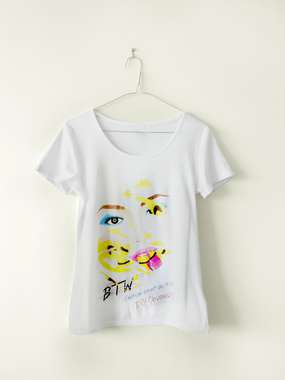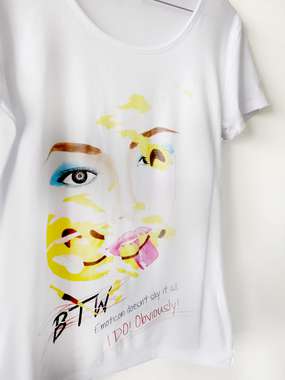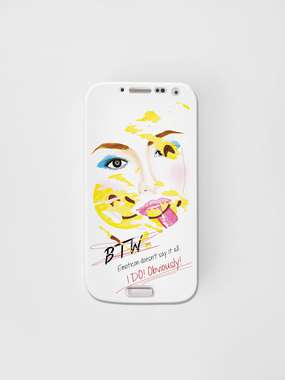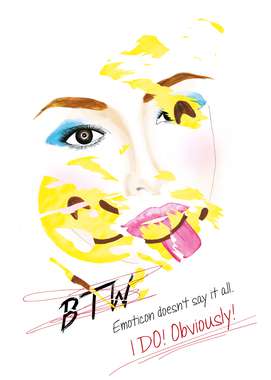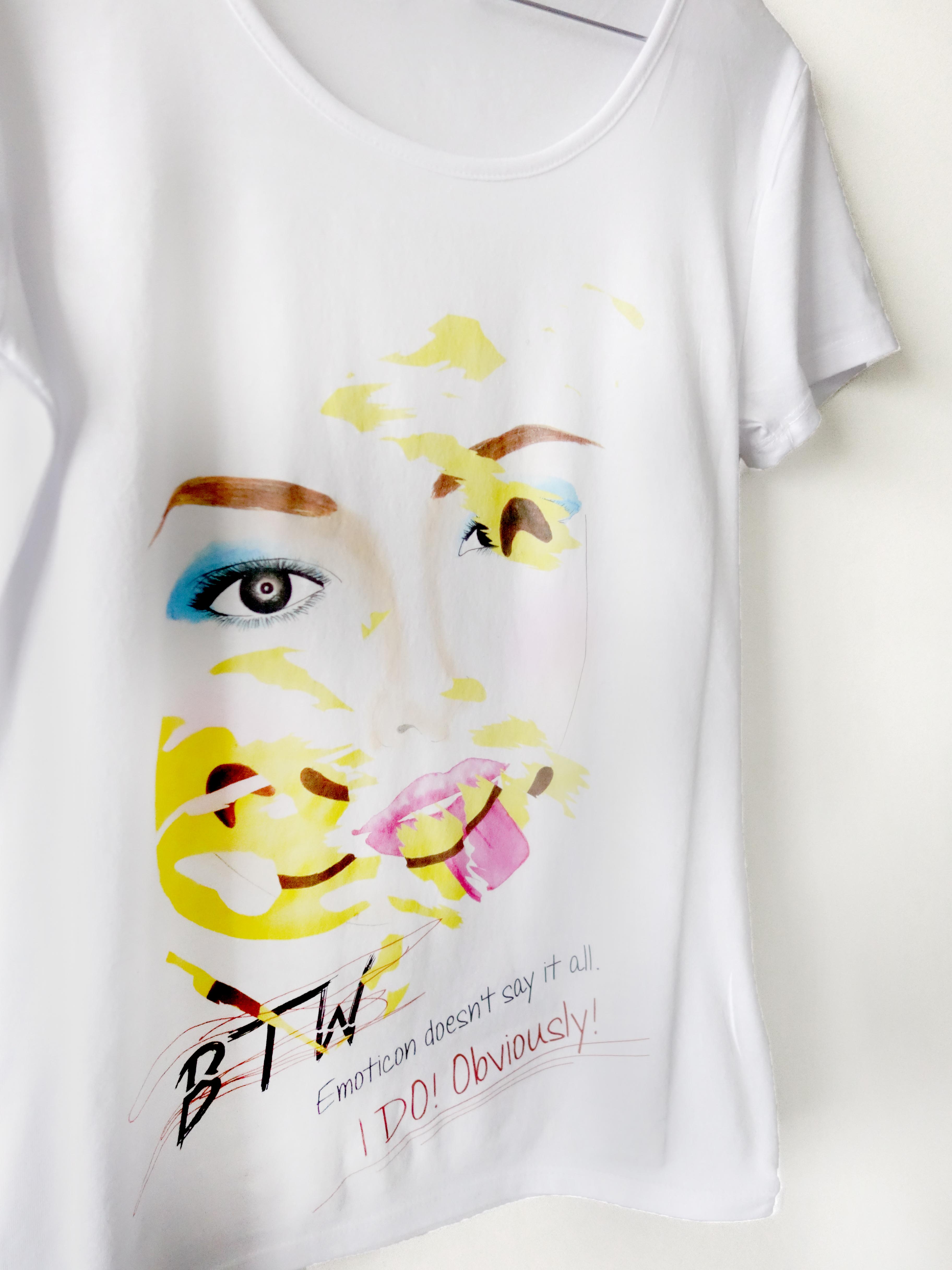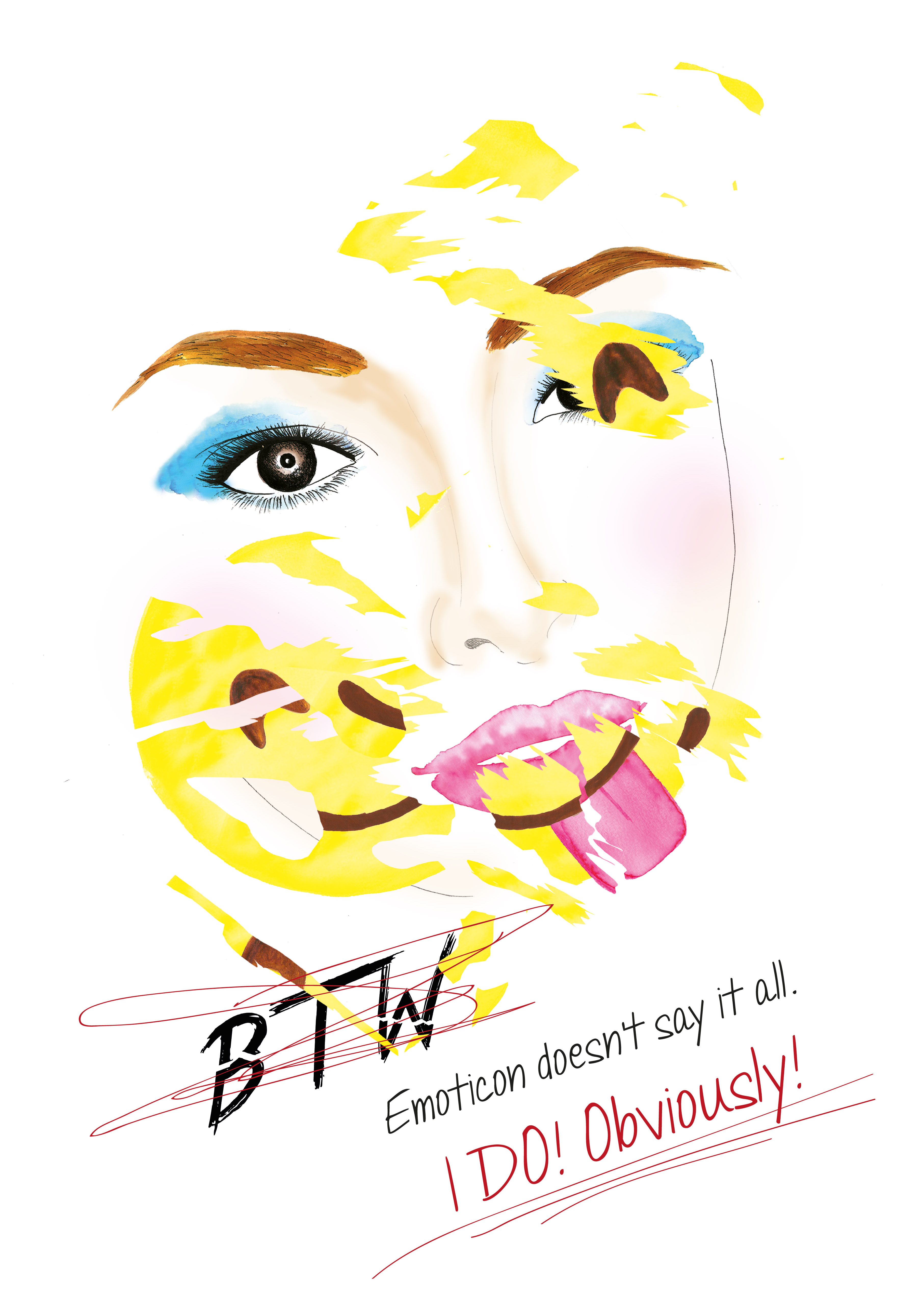Emoticon doesn't say it all
by fridatjiu
This work has not been commented by curators.
Title
Emoticon doesn't say it all
Headline
I DO! Obviously!
Concept author(s)
Frida Tjiupek
Concept author year(s) of birth
1992
Concept author(s) contribution
Frida did the research on texting generation as the starting point. She then brought up different concepts and start designing with multiple media.
Concept author(s) Country
Indonesia
Friendly Competition
Radical intimacies: dialogue in our times (2014)
Competition category
Visual communication practice
Competition subcategory
static
Competition field
academic
Competition subfield
student
Subfield description
Swinburne University of Technology
Check out the Radical intimacies: dialogue in our times 2014 outlines of Memefest Friendly competition.
Description of idea
Describe your idea and concept of your work in relation to the festival outlines:
The work concept is about the rebel against texting. Texting has blurred the essence of intimacy in our real life. It is also used for escaping from guilt, for example to reject invitation. Because they do not see others’ facial expression, they will feel less guilty. As the result, they cannot interpret others’ emotion well and they do not know that they are hurting people’s feeling.
What kind of communication approach do you use?
The communication approaches that I use are shirt, poster and phone flip case. I think they are the media that people usually use and look at. Therefore, it is easier to deliver the message. Firstly, people usually look at what and how others dress up. Fashion also gets viral pretty quickly. Shirt is also the most common style that suits everyone. Secondly, striking poster will draw attention for passer-by regardless age. Lastly, the image is printed in the front of flip case so that every time they want to reach their phone, they are reminded that there are people who are ready to talk to them.
What are in your opinion concrete benefits to the society because of your communication?
People can realize that texting has limitation in delivering our real intention and feeling clearly. Much misunderstanding arises due to texting. The message in the work is: 'Emoticon doesn’t say it all. I DO! Obviously!’. The emphasis on ‘I DO! Obviously!’ demonstrates that I am ready to talk to you. It offers conversation creating more intimacy which cannot be replaced by texting. The image of ripped emoticon and a woman behind it also shows that we have been covered by emoticon for so long. . If we look closely, the woman is not really smiling, but the emoticon shows ‘joking’ face. Now it is time to stay away from emoticon and show the real face.
What did you personally learn from creating your submitted work?
I realized that most of us have been aware that technology has changed the way we communicate nowadays, but only few cares and acts. We still do not go out from our comfort zone, which is with our phone and social media. I also see myself depended on technology and how I escape from guilt by texting my friend. The challenge is not to educate people on the consequences of technology addiction, but to encourage people to have dialogue to each other.
Why is your work, GOOD communication WORK?
To target young audiences, the work uses arbitrary style, which they like and feel familiar to, by having torn image of emoticon and handwriting style typography. The work depicts emotion by having the torn pieces of emoticon. The texting acronym ‘BTW’ (means ‘by the way’) as image grabs their attention first. Besides, it does not only inform, but also encourages audiences. The work tries to break up texting culture.
Where and how do you intent do implement your work?
The work is targeted to texting generation (millennial generation) who adores cool shirts and fancy phone case. They are likely to be influenced by their peers. It, therefore, makes the dissemination of message easier, even to those older. We know that not only young generation, but old generation also fall into this texting habit although not as much as millennial do. As adults probably do not wear this kind of shirt and use flip case, poster will keep them advised.
Did your intervention had an effect on other Media. If yes, describe the effect? (Has other media reported on it- how? Were you able to change other media with your work- how?)
I create a series of media with the same message – T-shirt and flip case as primary media, and poster as supporting medium. I guess it can be extended to other fashion tools, such as canvas bag.

